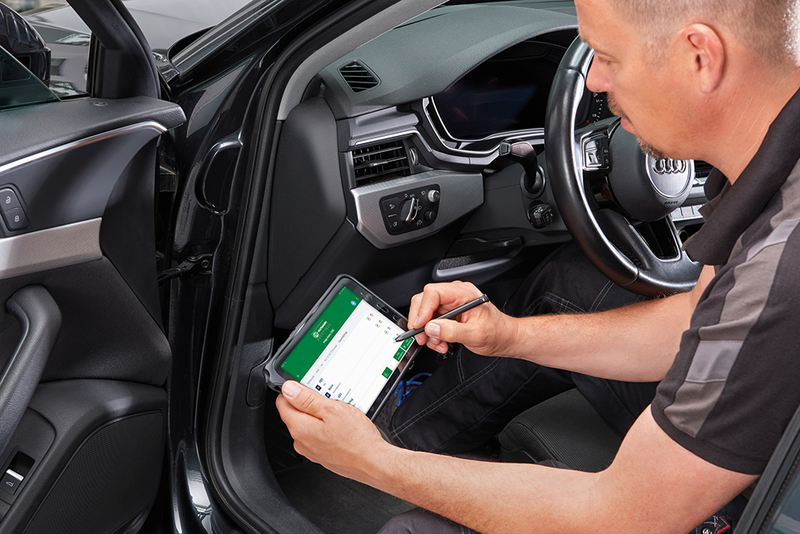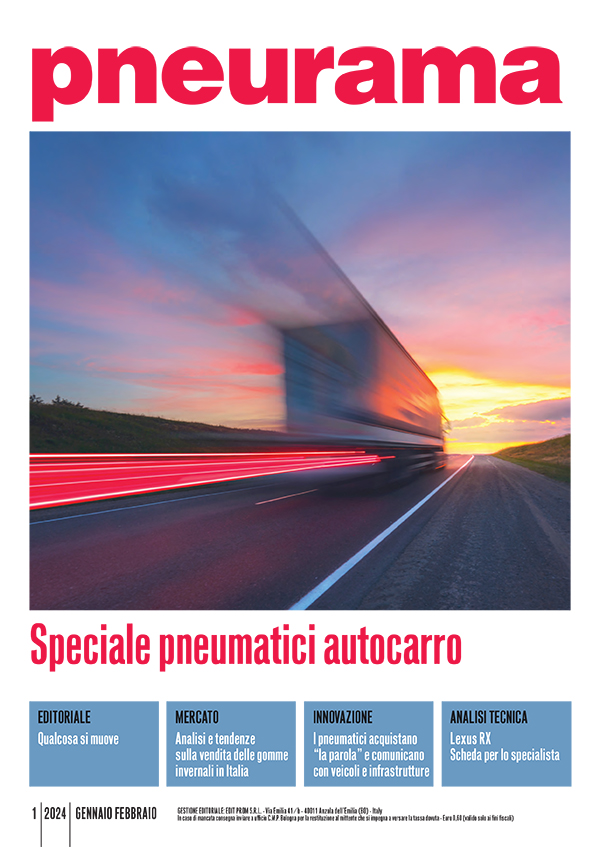Adas calibration opens up new business opportunities for independent car repair
The application of increasingly sophisticated technologies in the automotive world is also pushing independent garages to upgrade their maintenance equipment.

Adas systems work with complex data: distances, speeds, angles detected by a series of devices and sensors such as accelerometers, odometers, lasers, radars, cameras that exchange the most precise information possible to allow the systems to operate correctly. The slightest misalignment because of a small impact on a bumper, or a slightly changed wheel angle, can cause dangerous system malfunctions. When errors are significant, the system detects them and turns on the warning light. However, there may be individual undetected errors that can add up over time, so calibration plays an important preventive role. This has a cross-sectional effect on the work of tire dealers, mechatronics technicians, mechanics and body shops. The frailty of these systems requires, on the one hand, that the repairer does not carry out inappropriate interventions and, on the other hand, that the supply chain supplies technicians able to calibrate Adas systems, also on behalf of other operators, with first-rate skills and equally high quality standards.
More functions, more complexity
Adas are classified into five levels. In the first, the system controls the brakes but not the steering. It works with Lidar and radar and is able to activate emergency braking. The second integrates lane control and other advanced systems able to bring a vehicle to a complete stop. For this level, there are no common standards among manufacturers, so we can find “softer” systems that, depending on the road conditions, can drive the car independently for almost twenty seconds (i.e. Volkswagen group) and others more invasive systems with a much more limited operating time (adopted, for example, on some FCA vehicles). With the third level comes the need for specific regulations, which are still lacking in Europe; for this reason, cars currently fitted with these devices in our continent automatically deactivate the relative functions. The fourth level is still in the pipeline and is the one that, being continually connected to the infrastructures, will allow autonomous driving in cities. With the latest evolution, Level 5, driverless vehicles will be possible. The level of precision required by Adas calibration grows as their processing and intervention capabilities increase. Maintenance work that requires recalibration of these systems may not be particularly complex: a classic case is the replacement of a component equipped with sensors: bumpers, external rear view mirrors, windshields. Calibration is also necessary when updating ECUs and, of course, when the user notices a system malfunction. Even minor changes in set-up that occur with everyday use of a vehicle, especially on the rear axle, can affect the precision of the measurement. On some models, such as the Fiat 500, it may also be necessary to recalibrate the systems after seasonal tire changes, if you switch from 17" to 18" rims and vice versa.
The importance of good calibration
Depending on the make, model and component supplier of the system, calibration procedures can be static (carried out in the workshop, with panels) or dynamic, requiring a longer or shorter test drive with on-board diagnostics to conclude the calibration procedure. The preliminary diagnosis of all the control units during acceptance is an essential moment, because it serves to identify any errors that may affect the possibility of calibrating the Adas or not. The certificate, which proves that the system has been calibrated, must be issued to the driver and kept for five years by the workshop that carried out the operation. Correct calibration spares the motorist unnecessary and inconclusive costs: without a correct diagnosis of the system, he may be charged for replacing a radar or another expensive sensor without a real need. Maintaining battery charge during calibration is also essential, because a drop in voltage could prevent memory updates. In addition, direct connection to another battery could damage the most sensitive parts of the on-board electrical and electronic system, such as the capacitors used on the stop-and-start systems in some cars.
New opportunities for the sector
"An independent garage, given the right connections to the OEM world, can be faster and more accurate when equipped with the most advanced systems," explains Stefano Vitelli, Garage Equipment Technical Coordinator at Hella Gutmann Solutions, a diagnostics specialist in which Hella's experience as OEM supplier joins Gutmann's experience in multi-brand diagnostics. In order to carry out a correct calibration of Adas systems, a diagnostic device is required - in this case the mega macs One - and specific equipment for checking Adas, the CSC Tool SE, to which the SEG V headlight centring device can be added. During calibration, the CSC-Tool SE is positioned in front of the vehicle and then the ground clearance of the chassis is measured, as required by the VAG Group, for example. The calibration procedure, however, could be blocked in case of cars with a low ground clearance following the intervention of independent tuners with values not recognized by the system as these are out of the range set by the manufacturer. When this happens, the operator, not being able to make a false declaration, must refuse the calibration. The situation is different with aftermarket sport settings or official options, which fall within recognized parameters. After calibration, the system records the new camera angles (yaw, roll and pitch), which will be taken into account in Adas calculations.
Currently two versions of the CSC Tool are available: one is mobile, useful for windscreens replacement or for service and maintenance on fleet vehicles; the second is the SE (Second Edition), the latest addition to the Hella Gutmann range. The diagnostic mega macs One system must be informed about the set of tools needed because the dimensions of the panels are different (they are identified by an M in the code) and therefore the system must be set accordingly. Compared to the previous version, the SE has vertical sliding crossbeam, which do not require a second attendant; then there are new lasers detectors, which allows for a faster alignment of the CSC Tool to the vehicle. In combination with the SE, detectors and panels or mats are placed on the ground at the side or rear of the car to calibrate the rear view cameras and the 360° vision. The Radar 1 Evo kit allows the calibration of the front radar sensors at any positioning height (from the tallest SUVs to cars with more sporty setups). Laser pointers on magnetic support work in combination with a plate with three inclinations: forward, to calibrate the functions used in emergency braking, perpendicular with the ground, for driving at constant speed, and backward for acceleration. The Radar II kit is useful for vehicles with round radar protection glass, typical on some 2005-2006 Mercedes models; it is applied to the glass with Vaseline that acts as a seal, then a pump creates the necessary vacuum. The Radar III kit is used to calibrate rear radars and, in some cases, frontal radars too, such as the ones found on Toyota and Lexus, while the CSC 4-06 radar reflector (which works on the Doppler effect) is used to calibrate some rear radars on Audi and Mazda systems. Complementing the Adas calibration solutions, Hella Gutmann provides also intelligent lighting technologies. The SEG V headlamps, for example, work with a camera that produces data on a display where there are 4 arrows of different colours: when the arrow is green, it means the light beam is positioned correctly. Once the adjustment phase is over the new headlight adjustment is then confirmed.
The application of increasingly sophisticated technologies in the automotive world is also pushing independent garages to upgrade their maintenance equipment.
Tires are the only vehicle components that actually touch the road. In an era where connectivity is becoming a staple in automotive, Connected Tires will quickly become your tire dealer’s new allies
Often mistakenly confused with toe-in (which is only a part of it), correct wheel alignment is crucial as vehicle stability and even proper tire wear depend on it
